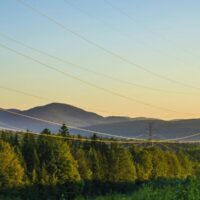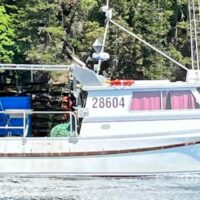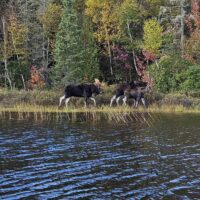Introduction in Mi’kmaq, New Brunswick dialect
[Click to see in English] L’nue’kati’l ta’n New Brunswick na etekl ta’n nikantuk ta’n tett teliknaq sa’se’wa’sik, ki’s wesuwa’tmkl nuta’ql elkusuwatmkl ukjit nisa’tmk ta’n teliknaq aqq ewikasik ekkat jiltek ta’n nekemowk kepme’kl Utann ukjit na naji-petlewikl ta’n na utann aqq msit New Brunswickewaq (CBC, 2022) ( New Brunswick Mlkikno’ti, 2023) (New Brunswick Mlkikno’ti, 2024). Utann, nkutey Amlamkuk (Amlamkukewey Utan), na kiskajo’ltijik ukjit ta’n wejku’waql elkusuwasikl ula ta’n elteskemk. Ta’n nenmi’titl ankaptmk nike’ na naji-petlewa’tutij teliknaq Wksankewo’ti, teliknaq kelpitasik, aqq we’jitmk kejitmkl maqmikewel ukjit kisitasik kwilutasik-apaji-klusimk kisaptasikl ukjit nisa’tun ta’n siawikwutikl siptaqtestoq ta’n na provincialey wasoqenawek nastaqtek wejiaq kisitasik aqq tewa’tkitasik ta’n utan-enkasik iknmuetasik teliknaq kisitasikl (DES).
Ula telitpiaq ekitk kwilk ta’n teltekl ta’n iknmuetasikl teliknaql kisitasikl, ta’n tel-wikasik aqq tetpaqa’tasik weskewa’timk etek kiskuk ta’n ika’toql anqateskawekl ukjit meski’k wesuwa’luksin ta’n ula kisitasikl, aqq ta’n L’nue’kati’l na kelu’kewe’l telpukuwultijik ukjit sapteskmnew ta’n anqateskawekl.
First Nations in New Brunswick are at the forefront of the energy transition, having already taken significant steps to reduce the energy and carbon footprint in their respective nations for the betterment of their communities and all New Brunswickers ( (CBC News, 2021); (New Brunswick Power, 2023); (New Brunswick Power, 2024) (CBC News, 2022)). Nations, like Amlamgog (Fort Folly First Nation), are poised to take the next steps of this journey. Their ambitions focus now on enhancing energy sovereignty, energy security, and establishing proving grounds for innovative demand-response solutions to reduce the ever-growing strain on the provincial electricity grid through development and deployment of community-scale distributed energy systems (DES).
This case study explores the concepts of distributed energy systems, the policy and regulatory arena present today that imposes barriers to broad adoption of these systems, and how First Nations are uniquely positioned to overcome these barriers.
Distributed energy systems
Distributed energy systems (DES) can take many forms. They refer to a suite of technologies and protocols that allow for energy to be generated and/or stored closer to the point of use, rather than reliance on vast distribution networks (Pepermans, Driesen, Haeseldonckx, & D’haeseleer, 2005). These systems can include elements such as solar panels, wind turbines, micro-hydroelectric units, gas-fired microturbines, combined heat and power (CHP) plants, energy storage solutions (like batteries), and other demand-response technologies.
Key features of DES include:
- Decentralization: Energy production occurs closer to the end user, which can enhance energy security and reliability.
- Renewable energy integration: DES often incorporate renewable energy sources, helping to reduce greenhouse gas emissions and reliance on fossil fuels.
- Grid resilience: By diversifying energy sources and locations, distributed systems can enhance the resilience of the broader energy grid, making it less susceptible to outages.
- Scalability: Distributed energy systems can often be deployed incrementally, allowing for flexible growth in accordance with localized energy demands.
- Local energy generation: This approach can empower communities and businesses to manage their energy needs and costs more effectively.
- Democratization: Refers to making energy generation and management more accessible, participatory, and equitable, shifting power (literally and figuratively) away from centralized utilities and toward individuals, communities, and smaller entities.
In application, DES could include:
- Residential use: Homeowners can install rooftop solar panels or small wind turbines to offset a home’s energy consumption. When coupled with an energy storage system (such as a battery), energy could be generated during off-peak hours, stored, and discharged to the home during times of peak demand on the grid.
- Commercial use: Businesses might use CHP systems or battery storage to reduce peak demand, resulting in energy cost savings by reducing demand charges, and increase efficiency.
- Microgrids: These localized grids can operate independently or in conjunction with the traditional grid, often using a mix of distributed energy sources. Microgrids can be scaled to serve industrial or institutional campuses, neighbourhoods, and even communities.
Figure 1 below compares a typical centralized grid against a distributed grid configuration. In the distributed system example, the energy storage units shown are in close proximity to end users and allows for the integration of local CHP plants along with domestic consumer generation including solar and CHP.
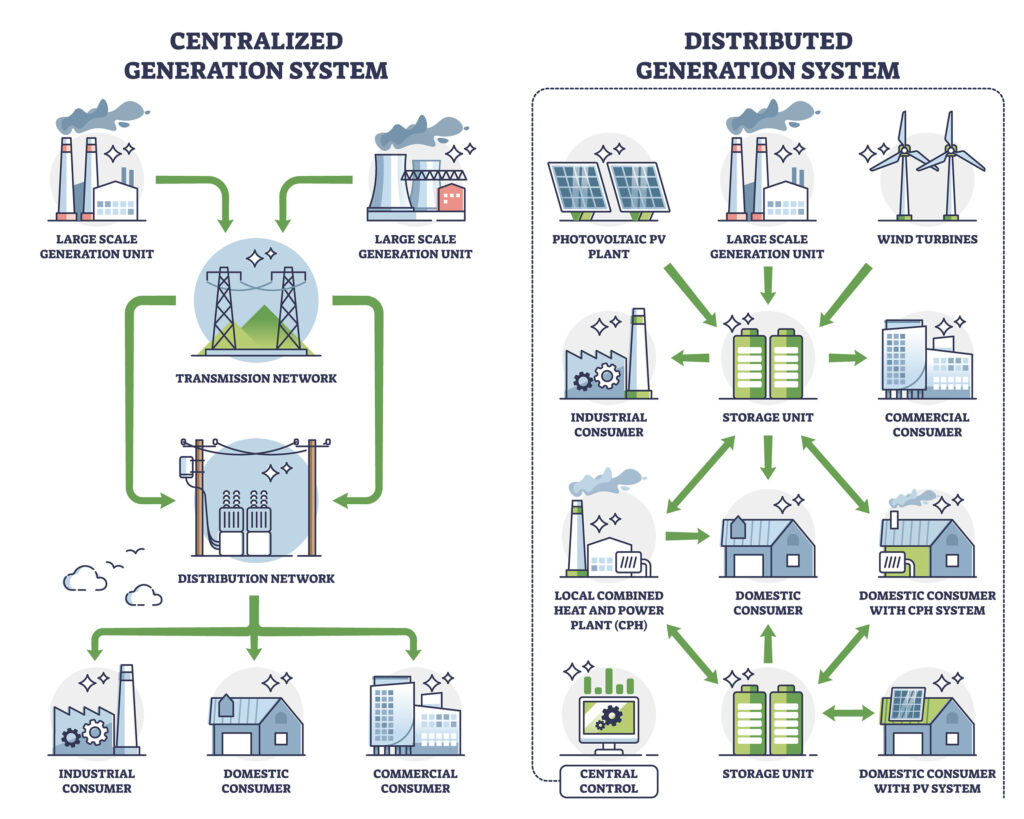
Distributed energy systems and the regulatory arena
The regulatory environment for electricity in New Brunswick is shaped by various governmental bodies, legislation, and policies aimed at overseeing the generation, transmission, distribution, and retail of electricity. We outline the main features below.
- The Electricity Act outlines the framework for managing and regulating the electric power industry in New Brunswick. It encompasses the responsibilities of the New Brunswick Energy and Utilities Board (NBEUB) and establishes guidelines for utility operations and rate-setting. New Brunswick operates under a regulated market structure, where the main utility, New Brunswick Power Corporation (NB Power), has a dominant position.
- The Electricity Act further establishes government policy for the electricity system. It states that NB Power’s “sources and facilities for the supply, transmission and distribution of electricity within the province should be managed and operated in a manner that is consistent with reliable, safe and economically sustainable service.” The Act also outlines a cost-of-service operating model, within which the system should be managed in such a way that results in the lowest cost to consumers (Government of New Brunswick, 2013).
- The NBEUB is an independent quasi-judicial tribunal that regulates electricity and natural gas utilities in New Brunswick, to ensure that customers receive safe and reliable service at just and reasonable rates. NBEUB regulates the rates charged by NB Power, the provincially-owned electric utility, and enforces reliability standards (New Brunswick Energy & Utilities Board, 2025).
- NB Power is the main utility in the province, responsible for the generation, transmission, and distribution of electricity. It is publicly owned and operates a balanced mix of generation facilities including nuclear, hydroelectric, and fossil fuel/thermal plants (New Brunswick Power, 2025). There are three local distribution utilities in New Brunswick, namely Saint John Energy, Edmundston Energy and Perth-Andover Electric Light Commission.
The New Brunswick Electricity Act states “No person, other than the [New Brunswick Power] Corporation, shall sell or supply electricity to a consumer or municipal distribution utility within the province” (Government of New Brunswick, 2013). Despite this, the regulations do allow for Independent Power Producers (IPPs) to operate in New Brunswick, through a strict set of arrangements. IPPs enter into Power Purchase Agreements (PPAs) with NB Power that define terms for selling electricity back to the grid. They are also required to obtain a license to operate from the NBEUB. From time to time, based on the utility’s projected demands from their Integrated Resource Plan (IRP) (New Brunswick Power, 2023), NB Power will issue Requests for Expressions of Interest (REOI) for new generation assets from IPPs. Recent REOIs include a call in 2023 for up to 220 megawatts (MW) of renewable resources and up to 50 MW of energy storage (New Brunswick Power, 2023), and a call seeking qualified respondents to build, own, and operate a 400 MW simple-cycle combustion turbine generating station (New Brunswick Power, 2024).
What does this all mean? The electricity market in New Brunswick is heavily regulated, with the provincial utility (NB Power) exclusively responsible for generation, transmission, and distribution of electricity. While IPPs are permitted to operate, the Government of New Brunswick establishes the market and operating conditions for these producers. Small-scale behind-the-meter renewable generation is permitted; however, these systems are capped today at 100 kilowatt (kW) and the resultant net-metering agreements offer no financial returns for excess electricity generated through these systems on an annual basis. Further, there is no open energy trading market within the distribution system, meaning there is no path for peer-to-peer energy trading between consumers.
If a First Nation were interested in pursuing a heightened state of energy independence and energy sovereignty, one of the only mechanism available today would be through a response to a Request for Expression of Interest for new generation assets from NB Power. This would be an open and competitive bid process, aimed at procuring electricity at rates that result in ratepayer benefit (i.e., savings).
Amlamgog (Fort Folly First Nation)—Leadership from the forefront of the energy transition

Amlamgog (Fort Folly First Nation) is a Mi’kmaq community located in New Brunswick, Canada. Established in 1840, the community is situated near the village of Dorchester, along the southeastern coast of New Brunswick. The community is part of the larger Mi’kmaq Nation, which has a rich cultural heritage and a history that dates back thousands of years.
Amlamgog has approximately 140 registered members (Government of Canada, 2025), with an on-reserve population of approximately 60. The community is comprised of approximately 35 residences, six band-owned commercial buildings, including a recently constructed five-unit elder’s residence.

In recent years, based on a commitment made by Chief and Council, Amlamgog has taken several bold steps in advancing the community’s sustainability goals, for the betterment of future generations.
- In 2022, Amlamgog commissioned four net-metering solar systems connected to commercial buildings in the community (CBC, 2021). The total installed solar capacity is 112 kW with an annual production of approximately 144,000 kWh/yr, and a lifetime greenhouse gas (GHG) reduction of 1,771 tonnes CO2 (Natural Forces Solar, 2024).

- In 2023, Amlamgog, supported by the North Shore Mi’kmaq Tribal Council, undertook development of a Community Energy Plan (CEP) consisting of a community energy assessment, a community energy and emissions plan, and an emissions reduction pathway. One of the key findings of the CEP demonstrated that the per-capita electrical consumption in the community was approximately half when compared with the New Brunswick average (9,118 vs. 17,600 kWh/person/year) (Quest Canada, 2024). This can largely be attributed to the net-metering solar systems that are operating in the community.
- Amlamgog has committed to enhancing the building envelope for all new residential and commercial construction projects through methods such as insulated concrete form exterior wall systems, resulting in a lower energy and environmental footprint for all new developments. Although not formally adopted as a policy, the community has expressed interest in making this formal commitment (Quest Canada, 2024).
- Amlamgog is actively participating in the NB Power First Nations Energy Efficiency Program. By the end of 2025, approximately 17 per cent of the community’s housing stock will have undergone a comprehensive energy retrofit, including conversion of the remaining fuel oil heating systems to electric.
- Amlamgog has committed to fully electrifying corporate operations, including fleet assets. The nation has recently purchased its first electric vehicle (EV) and is advancing plans to install banks of EV chargers to support this transition. The community is also seeking to install revenue-grade fast changers, which would serve the public and provide an alternative own-source revenue stream.
With a total electrical consumption of 666,255 kWh in 2023, Amlamgog is well within reach of achieving the status of a net-zero energy community. Doing so, however, would require a combination of regulatory and infrastructure investments.
Taking the next steps – Integration of distributed energy systems in Amlamgog
[Click to see in English] Msit mesnmk nationaley aqq provincialey teliknaq sa’se’wa’sik mesnmkl na nuta’qtital msit ta’n ilapaqewemkewe’l ta’n na ilapaqawemkewe’l-masqwa’tasikl. L’nue’kati’l utann, nkutey Amlamkuk ta’n New Brunswick, na kelu’lkewe’l telpukuwikl ukjit almi’jkan nikana’tu’n tel-lukwen na kisitaqetijik ta’n Kana’taewey waqme’k teliknaq sa’se’wa’sik. Nekemowk apoqnmua’tijikw ta’n ketloqoe’l apoqnmuekl, melkuktmk ta’n westawiasik aqq tel-lukwemk ukjit kaqi tetpaqtek telo’ltimk kjijitaqn elt kiskukewey espitasikewey kelu’lkewe’l telpukuwimkl ukjit na layjitunew sa’se’wa’sik pilu’tek ta’n welapetmkl kitk L’nu’k aqq mu L’nu’k te’sultijik. Ekina’mujik L’nu’k nikanusk Ula ta’n etek na nuta’q ukjit mesnmk na tplutaqniktuk, tetpaqtek, aqq westawiasik teliknaq elmi’knik.
Fully achieving national and provincial energy transition goals will require all the tools in the toolbox. Indigenous communities, like Amlamgog in New Brunswick, are uniquely positioned to play a leading role as innovators in Canada’s clean energy transition. Their stewardship of natural resources, commitment to sustainability, and ability to balance traditional knowledge with modern technology uniquely positions them to drive transformative change that benefits both Indigenous and non-Indigenous populations. Empowering Indigenous leadership in this space is essential to achieving a just, equitable, and sustainable energy future.
If we think about communities as a single electrical load, the ability to have communities operate independently from the electrical grid in times of peak demand (in what is sometimes referred to as “island mode”) would enhance the overall resiliency and reliability of a region’s electrical grid. These islanded grids can also be used to rebuild the larger grid if there is a major unplanned outage.
On February 4, 2023, New Brunswick faced a record-high demand of 3,394 MW (Conservation Council of New Brunswick, 2023) due to a severe cold weather event that place considerable strain on the provincial grid and the portfolio of generation assets managed by NB Power. With neighbouring jurisdictions under the same duress, electricity imports were unavailable—New Brunswick was forced to operate in a state of self-reliance.
Had all 15 First Nation communities in the province of New Brunswick (see Figure 4 below) been equipped with community-scale distributed energy systems, the result would have been the equivalent of turning on a moderately-sized power plant, without the cost and complexity of having to construct one.
In a situation where every electron matters, having additional capacity margin in the right locations can mean the difference between grid stability and outages.
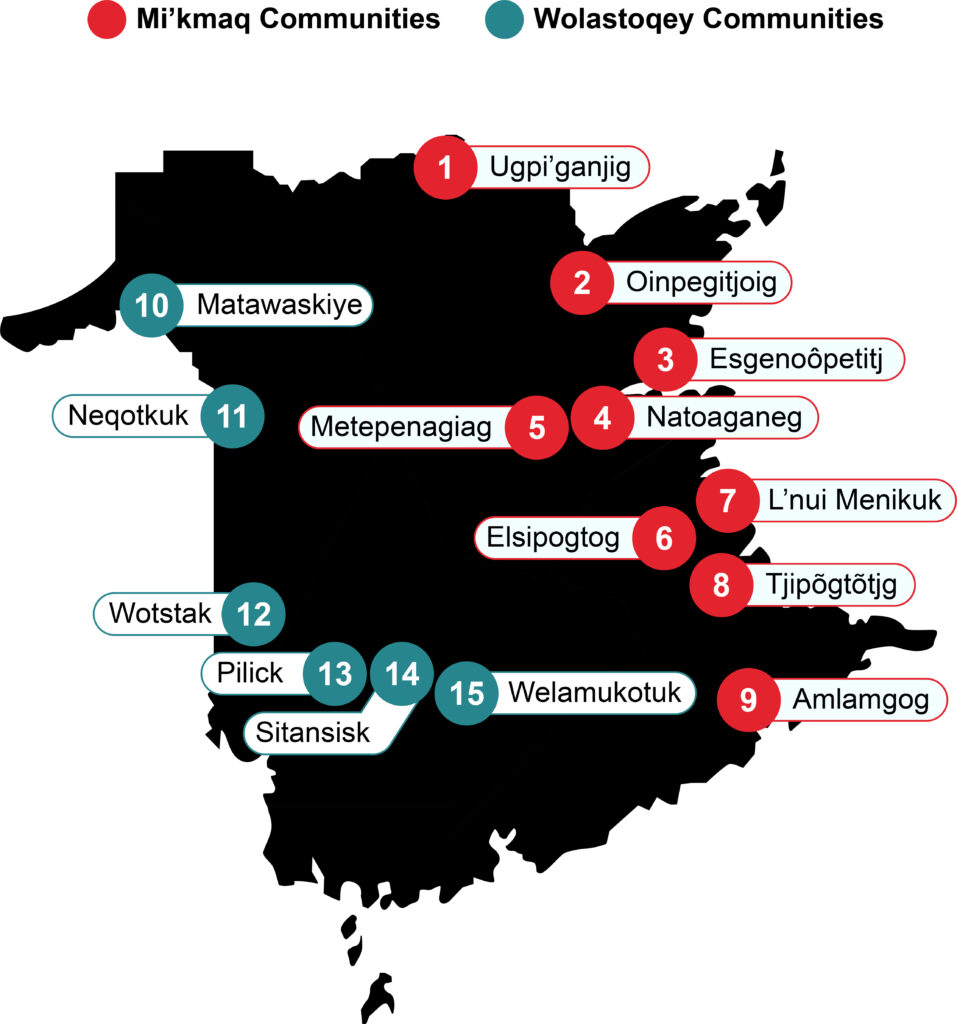
In Amlamgog, a community-scale distributed energy system could take many forms but would likely consist of a micro-grid coupled with a small generation asset and/or energy storage system. A micro-grid forms a localized electricity grid, independent from the main power grid. Through a micro-grid controller, the system balances supply into the grid because of demand.
Generation could come from a variety of sources, including:
- A community-scale solar farm, like the Shediac Smart Energy Community Project (New Brunswick Power, 2025) coupled with a battery energy storage system. In development of the Amlamgog Community Energy Plan, community members identified potential locations for a community solar park and expressed interest in exploring agrivoltaics (the integration of solar energy generation with agricultural practices on the same land).
- A community-scale wind farm or integration of vertical-axis wind turbines, coupled with a battery energy storage system. During development of the Amlamgog Community Energy Plan, community members expressed concerns related to noise which would require further evaluation due to the small footprint of the community (Quest Canada, 2024).
- A community-scale battery energy storage system, charged via the NB Power grid at times of low demand and dissipated during times of peak demand on the grid.
- A community-scale geothermal energy plant, similar to the Tu Deh-Kah Geothermal project in British Columbia (Tu Deh-Kah Geothermal, 2025). This option is judged to be less feasible given the limited application of these types of systems in Canada as a whole.
- A combined heat and power (CHP) co-generation plant, with biomass, natural gas or biofuel as the primary feedstock. An existing biomass heating system serving the existing commercial building could be replaced with a CHP plant, providing the potential to add additional heat load such as year-round food production (e.g., greenhouses), addressing food security in addition to energy security. The North Bay Ontario Community Energy Park, located in North Bay, Ontario, is an excellent example of such a system (Community Energy Park, n.d.).
One consideration of importance to Amlamgog would be selecting a system that ensured a net-positive environmental and emissions benefit that could help accelerate the community’s mission of achieving net-zero carbon emissions. New Brunswick’s electrical grid in 2025 yields a carbon intensity of 350g CO2e/kWh (Government of Canada, 2024). A distributed energy system with embedded generation would be required to demonstrate that overall GHG emissions for the community were lower than drawing from the provincial grid.
[Click to see in English] Ta’n kespi wikasik: tepiaql espitasikl etekl kiskuk ukjit ika’lan Amlamkuk (aqq pilewe’l utann) ukjit sia’wa’tun ta’n tel-lukwutijik ukjit mesnmk teliknaq Wksankewo’ti aqq teliknaq newtukwa’lukwemk. Ta’n anqateskawekl? Ta’n tetpaqa’qewey weskewita’mk aqq we’jitmk ta’n na melkiknaq lukwaqn telitpiaq ukjit kina’muen ta’n welapetmk ta’n ula kisite’tasikl we’jitasikl kisitasikl ala’tutal msit teliknaq kelpitmk ukjit msit New Brunswickewaq.
The bottom line: sufficient technologies exist today to enable Amlamgog (and other communities) to advance their mission of achieving energy sovereignty and energy independence. The barriers? The regulatory arena and establishment of a strong business case to demonstrate the benefit that these strategically located systems would have on the overall energy security for all New Brunswickers.
What needs to happen?
To advance implementation of distributed energy systems in First Nations communities, this case study proposes a series of recommendations including undertaking a detailed analysis and modelling of the potential benefits, establishing of a regulatory sandbox, and amending the policy and regulatory framework governing electricity in the province of New Brunswick.
- Nikana’te’n L’nuey-nikana’tasik Teliknaql Tel-lukwemkl | Prioritize Indigenous-led energy initiatives
Amending provincial energy policy to specifically support First Nations in developing their own energy projects will promote energy sovereignty and economic development. NB Power’s LORESS program, which prioritized small-scale (<20MW) renewable energy projects involving First Nation partners, is an example of what has worked in the past (Government of New Brunswick, 2016). The full evolution would involve creation of mechanisms through which First Nations would have paths to market for their own innovative energy solutions.
- We’jite’n aqq Elte’n ta’n Lukwaqn Telitpiaq | Establish and model the business case
A more robust modelling of the net benefit that distributed energy systems could deliver to ratepayers and the provincial grid is required. The Government of New Brunswick or NB Power could commission such a study, in partnership with New Brunswick First Nations and other non-governmental organizations such as Smart Grid Innovation Network (Smart Grid Innovation Network, n.d.). Federal partners such as Natural Resource Canada’s Smart Renewable and Electrification Pathway Program could be a source for funding resources to support this initiative, as could innovation accelerators such as Foresight Canada. Peak demand profiles, grid connection studies, and system integration and controls are all elements that require further study.
- We’jite’n Amlamkuk ta’n na Wikimk Wetnu’kwatmkuo’kuo’m aqq Espitasik Kejitoq Maqmikew | Establish Amlamgog as a living lab and technology proving ground
In a similar way that Shediac, New Brunswick became a proving ground for integration of grid-scale solar, behind-the-meter solar coupled with battery energy storage systems, and smart thermostats through the Shediac Smart Energy Community Project, Amlamgog is well advanced and positioned be the host site for integration of a community micro-grid and sustainable energy generation. This ecosystem would be best established as a form of “regulatory sandbox” that allows businesses, especially startups and innovators, but in this case also utilities and private sector partners, to test their products, services, or business models in a controlled environment. The Province of New Brunswick could establish the necessary conditions for such a lab through regulatory amendments.
- Wesuwa’tasik ta’n na Iknmuetmk Teliknaq Apoqnmuek Tel-wikasik Telita’simk | Adoption of a distributed energy resource policy mindset
To progress beyond pilot projects, this case study recommends the province adopt and incorporate a community-scale distributed energy resource policy mindset. Amendments to the Electricity Act have been made on several occasions in recent years including Bill 10 (Government of New Brunswick, 2023), which allows for the sale of electricity from a renewable generation facility (i.e., wind farm) directly to a new electricity consumer, and allows for the maximum price NB Power can pay for electricity generated by advanced small modular reactors to be established by regulation. There is a policy framework in place today that allows for “inside the fence” renewable and low-carbon generation at large industrial sites in the province; amendments that establish First Nation communities as being inside the fence is one potential path. Other paths include structures to enable renewable-to-retail such as the Nova Scotia Power Community Solar Garden (Nova Scotia Power – An Emera Company, 2025) or expansion of the net-metering renewable generation to monetize and incentivize excess capacity back to the grid, especially in times of peak demand.
Additional examples of Indigenous-led energy innovation
Across Turtle Island, there are many additional examples of Indigenous-led innovations in the energy transition that are delivering value to society. Key to these projects is a suite of enabling conditions including financial catalysts, legislative amendments, and energy market conditions.
| Project | Sree Vyàa (Old Crow Solar Project) | Tu-Deh-Kah Geothermal Project | Montana First Nation Microgrid Project |
| Location | Old Crow, Yukon | Fort Nelson, British Columbia | Montana First Nation, Alberta |
| Nation(s) involved | Vuntut Gwitchin First Nation | Fort Nelson First Nation | Montana First Nation |
| Approach | 940 kW DC solar array, a 616-kWh battery energy storage system and micro-grid controller replaced historic reliance on diesel generators. | Generation of 7 to 15 MW of clean electricity through a closed-loop binary geothermal system with Organic Rankine Cycle turbines, sufficient to power around 10,000 homes. | Akamihk Energy, owned by Montana First Nation, will investigate the potential to integrate all electricity distribution infrastructure and service on Montana First Nation’s lands into a consolidated microgrid; manage energy flows within that grid; and meter exchange to the Alberta Interconnected Electric System (AIES) |
| Impact | Displaces 190,000 liters of diesel fuel annually, reduces annual GHG emissions by 680 tonnes of CO₂ equivalent, and generates $10.5M in revenue for the nation over a 25-year lifespan. | Transformation of existing natural gas field into sustainable geothermal energy facility. Beyond electricity generation, the project plans to leverage excess heat for additional economic activities, such as agriculture, tourism, and heating buildings, thereby promoting energy security and economic growth in the region. | Akamihk Energy is a 100% Montana First Nation owned company and operates as a Rural Electrification Association. The company operates at arm’s length from Montana First Nation Chief and Council. Beyond the power generation benefits to the FN, the business includes agrivoltaics, new home construction and streetlight sales. |
| Enabling conditions | The Yukon government created pieces of legislation, including necessary independent power producer policy regulations, to make this project possible – demonstrating how governments and communities can partner to unleash opportunity. | As British Columbia’s first 100 per cent Indigenous-owned commercial-scale geothermal power plant, Tu Deh-Kah Geothermal exemplifies Indigenous leadership in sustainable energy development. The permit for this project was granted by the BC Ministry of Energy, Mines and Low Carbon Innovation. | Capacity funding ($1M) from NRCan Smart Renewable and Electrification Pathways Program, and de-regulated energy market |
| Reference | https://arctic-council.org/news/the-old-crow-solar-project/ | https://tudehkah.com | https://akamihkenergy.com |
The path forward
[Click to see in English] Ta’n awti ta’n na mu koqoey te’wijuwiktnuk elmi’knik pemiaq sia’wa’sik telo’ltimk L’nuey maqmikew, aqq mu eyktnuk awti ta’n mu koqoey wiaqtektnuk L’nu wiaqa’lut.
Ke’sk na msit wesuwa’tu’tij etek ta’n L’nu’k wiaqa’luj kiskuk na mekwaye’k kikto’qu lukwaqnn ukjit tel-lukwemk piley teliknaq kisitasikl (nkutey Nike’ ta’n Nuweg Teliknaq Kisitasik), na’te’l etek ta’n so’qiaq elukwemk ukjit ta’n Province na New Brunswick aqq ta’n provincial ewe’mek (NB Mlkikno’ti) ukjit lukwen na naji-kikjuk toqi-lukwutimk elt L’nu’k toqo’ma’tiji ukjit kisaptmnew ta’n metuwe’kl lukwaqnikl a’sekek ta’n wasoqenawek nastaqtek kiskuk.
The path to a net-zero carbon future runs through traditional Indigenous territory, and there is no path to net-zero without Indigenous inclusion.
While the generally accepted premise of Indigenous inclusion today is centred around opportunities to participate in new energy developments such as the Nuweg Energy Project, there exists an emerging opportunity for the Province of New Brunswick and the provincial utility (NB Power) to work in closer unison with First Nation partners to solve the difficult challenges facing the electricity grid today.
Distributed energy systems have proven their application and value in several use cases, some of which are explored in this case study.
The hurdles to seeing these systems adopted more broadly, however, are not technological in nature. Rather, it is the electricity market ecosystem in New Brunswick that currently restricts adoption of this type of innovation.
Policy, legislation and regulatory amendments, or alternatively, the creation of a “regulatory sandbox” could accelerate the adoption of innovative energy systems, as one of the tools in the energy transition toolbox.
First Nation communities in New Brunswick, exemplified by Amlamgog, have taken bold first steps in recent years on the journey to a net-zero future. Community energy planning, investments in behind-the-meter energy generation assets, commitments to lowering the energy and carbon footprint of residential and commercial building infrastructure and advancing initiatives including fleet electrification and EV charging infrastructure deployment are some of the early achievements.
With much of the early groundwork already completed, a First Nation like Amlamgog, having been at the forefront of the energy transition already for some time, is now poised to participate fully in the development of policy and regulatory reform to enable broad integration of distributed energy systems in the New Brunswick market. If enabled, benefits could be realized across the entire provincial grid.
First Nations are already demonstrating what sustainable communities of the future will look like. It is time to break down the barriers to this force of innovation for the benefit of all Canadians. Who better to lead than our First Nations?
Work cited
CBC. (2021, October 21). Fort Folly First Nation makes big switch to solar energy. Retrieved from https://www.cbc.ca/news/canada/new-brunswick/fort-folly-solar-energy-1.6218146
CBC. (2022, September 16). Mi’kmaw community hopes net-zero building reduces carbon footprint and saves money. Retrieved from https://www.cbc.ca/news/indigenous/mi-kmaq-net-zero-building-1.6583720
Conservation Council of New Brunswick. (2023, May). Wind Energy is Reliable: Debunking Claims that Wind Power Failed New Brunswickers when they Needed it Most. Retrieved from https://www.conservationcouncil.ca/wp-content/uploads/2023/05/Wind-energy-is-reliable.pdf
Government of Canada. (2025, January). Registered Population – Fort Folly. Retrieved from https://fnp-ppn.aadnc-aandc.gc.ca/fnp/Main/Search/FNRegPopulation.aspx?BAND_NUMBER=9&lang=eng
Government of New Brunswick. (2013, June 21). New Brunswick Electricity Act.
National Indigenous Nations and Electrification: Strategy to Accelerate Indigenous Ownership of Net Aero Infrastructure in Canada, First Nations Major Projects Coalition https://fnmpc.ca/tools-and-resources/reports-publications/
Natural Forces Solar. (2024). Fort Folly First Nation. Retrieved from https://naturalforcessolar.ca/commercial/fort-folly-first-nation/
NB Power. (2024). Shediac Smart Energy Community Project. Retrieved from https://www.nbpower.com/en/grid-modernization/smart-grid-atlantic/shediac-smart-energy-community-project/
New Brunswick Energy and Utilities Board. (2025). Retrieved from https://nbeub.ca.
New Brunswick Power. (2023). 2023 Integrated Resource Plan: Pathways to a Net-Zero Electricity System. Retrieved from https://www.nbpower.com/en/about-us/our-energy/integrated-resource-plan
New Brunswick Power. (2023). First Nations Energy Efficiency Program Guidelines.
New Brunswick Power. (2023, February 10). NB Power inviting interested New Brunswickers to submit Expression of Interest for Wind, Solar, Tidal Power and Storage Solutions. Retrieved from https://www.nbpower.com/en/about-us/news-media-centre/news/2023/nb-power-inviting-interested-new-brunswickers-to-submit-expression-of-interest-for-wind-solar-tidal-power-and-storage-solutions/
New Brunswick Power. (2024, January 17). Neweg Energy Project: Leading the Way to a Sustainable Energy Future in New Brunswick. Retrieved from https://www.nbpower.com/en/about-us/news-media-centre/news/2024/neweg-energy-project-leading-the-way-to-a-sustainable-energy-future-in-new-brunswick/
New Brunswick Power. (2024). Our Energy. Retrieved from https://www.nbpower.com/en/about-us/our-energy.
New Brunswick Power. (2024, June 26). Request for Expression of Interest- Renewable Integration and Grid Security REOI.
North Bay Hydro. (n.d.). Community Energy Park – How It Works. Retrieved from http://www.communityenergypark.ca
Quest Canada. (2024, May). Fort Folly First Nation Community Energy Assessment.
Quest Canada. (2024, April 15). Summary of Community Energy and Emissions Plan Development Workshop.
Smart Grid Innovation Network (SGIN). (2025). Distributed Energy Resources – Fundamentals.


